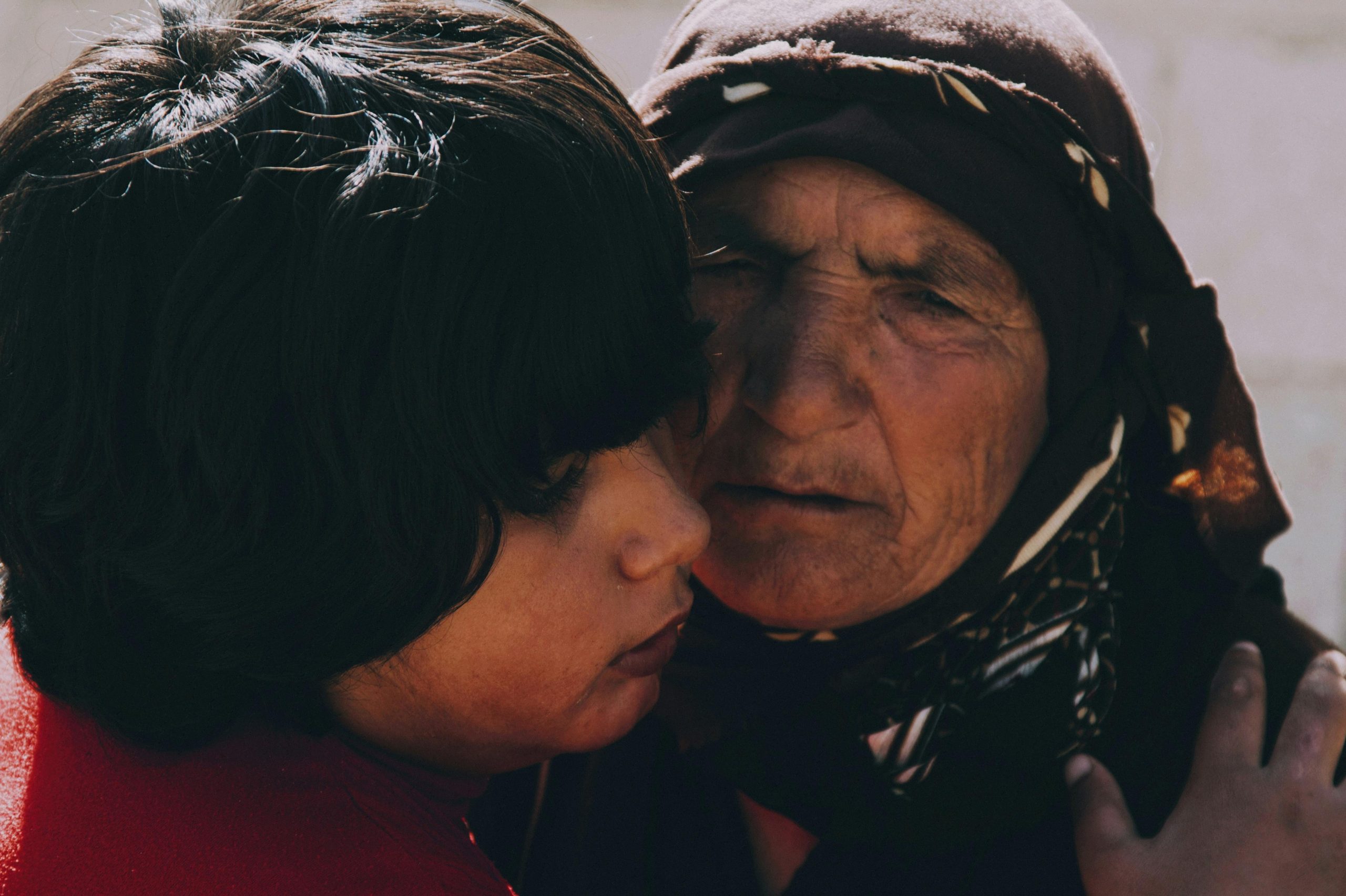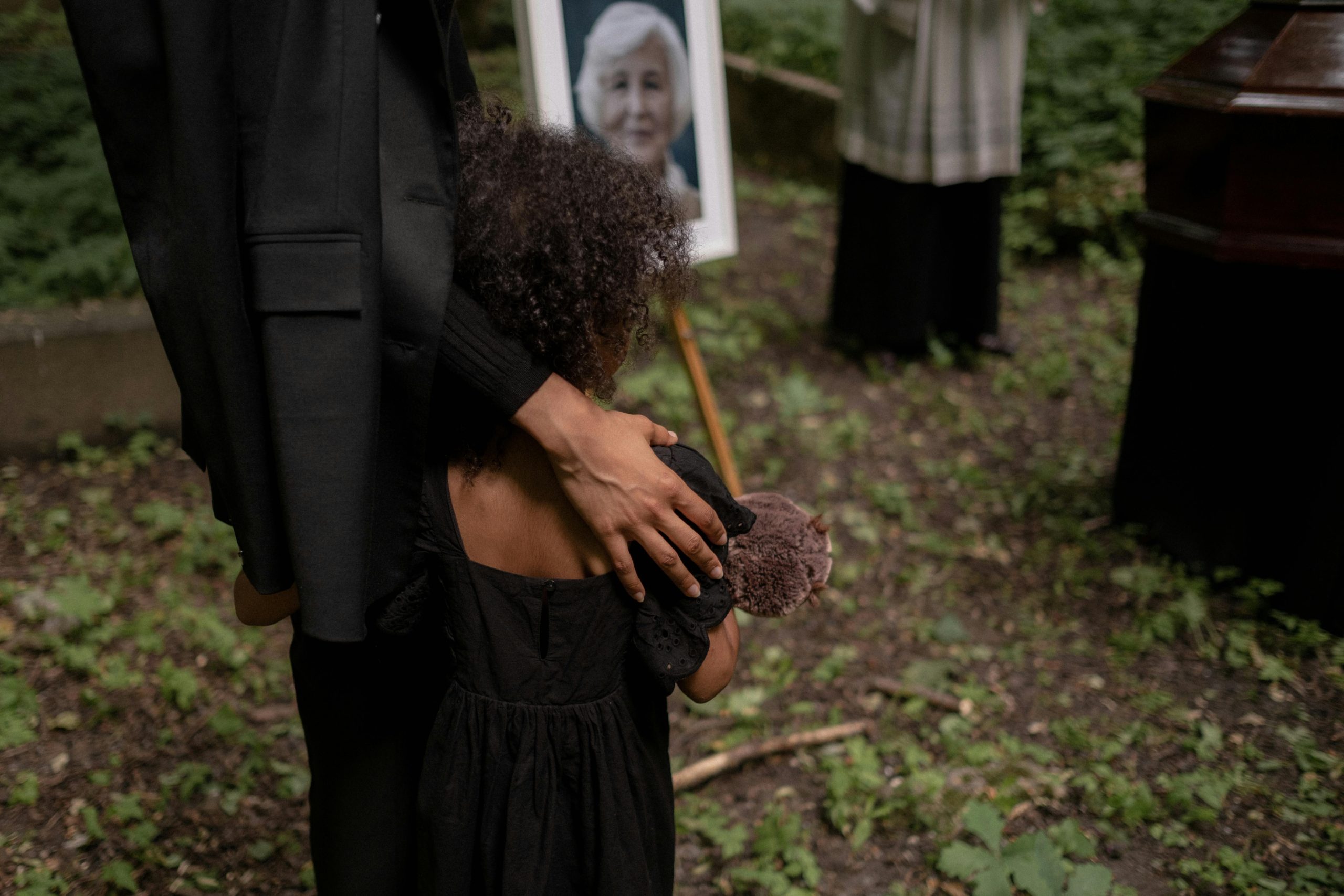Understanding Grief in Childhood

Children’s grief is a complicated tapestry of emotions that frequently takes on distinct forms from those of adults. It’s a reaction to loss—be it divorce, death, or even the passing of a cherished pet. Every child’s grieving process is different, influenced by their emotional development and comprehension of loss. Grief has many different origins, but it always has a powerful effect that reaches deep into a child’s emotional health.
Typical Reasons for Children’s Grief
- Death: A momentous loss that undermines their feeling of safety.
- Divorce: Family structure changes can cause a great deal of unease.
- Pet Loss: Many kids view their pets as treasured friends.
Differences in Age Groups’ Grief Reactions
Youngsters react differently to loss depending on their age. While teenagers may struggle with deep existential problems, toddlers could not understand the permanence of loss. This variation calls for a customized assistance strategy that takes the child’s developmental stage into account. Assisting them in navigating their grieving process begins with acknowledging these distinctions.
Knowing the subtleties of children sorrow allows us to be a healing and hopeful light to our youngest mourners, helping them through their darkest hours with compassion and love.
Identifying the Indices of Bereavement in Kids

Children who are grieving often display a variety of emotional and behavioral cues that indicate internal conflict. Sadness, a deep sense of loss, frequently descends upon them, obscuring their typically upbeat demeanor. Anger can also emerge, aimed toward the source of their sadness, other people, or circumstances. Feeling confused about their emotions or the reasons behind the loss can make them feel alone and misinterpreted.
- retreat from loved ones, preferring to be by oneself for comfort.
- Their regular routine may be disturbed by changes in their eating and sleeping habits.
- A reversion to past behaviors, such bedwetting or clinging to a parent, indicates a strong need for safety and comfort.
It’s critical to identify these symptoms early on. It provides access to prompt assistance, enabling kids to process their loss with empathy and understanding. We provide a lifeline in their hour of need by validating their emotions and recognizing their anguish. By gently directing children towards a future in which the memory of loss is entwined with the tenacity of the human spirit, this early intervention provides the foundation for recovery.
Managing Grief in Childhood: Assisting Your Child in Coping with Loss

Starting a Discussion with Your Child About Loss
It’s difficult to bring up loss with a child at first. It calls for timing, patience, and compassion. The secret is to establish a secure environment in which kids can freely express their feelings. Let them take the lead in the conversation by introducing the subject subtly at first. This method encourages transparency and trust, which opens the door for a sound mourning process.
Age-Related Reasons for Death and Grief
A careful balance between simplicity and honesty is required when explaining death and bereavement to youngsters. Use plain language while speaking to younger kids; stay away from using euphemisms, which may cause confusion. Teenagers and older kids are capable of handling more complex emotions and are ready for more in-depth conversations. Making your explanation relevant to their developmental stage guarantees that kids will comprehend and deal with the idea of loss in a healthy manner.
Encouraging Kids to Ask Questions and Express Their Feelings
Urge your kids to ask inquiries and express their emotions. This honest discussion reassures them that it’s acceptable to experience sadness, confusion, or even rage. Validate their feelings by paying close attention to what they’re saying and showing empathy in return. Encouraging kids to express themselves freely in a judgment-free environment is essential to their emotional rehabilitation.
The Healing Process and the Significance of Honesty and Openness
Transparency and honesty are essential for assisting kids in processing their loss. Although it would seem like a good idea to shield kids from the truth, doing so might actually cause mistrust and misunderstanding. Being honest about the circumstances teaches children resilience and strength by demonstrating how to handle challenging feelings and circumstances. This open and sincere approach paves the way for their recovery by demonstrating to them that there is hope even in the midst of suffering.
Love, tolerance, and compassion are necessary on the journey of comprehending and assisting a grieving youngster. Through honest conversations, age-appropriate explanations, emotional expression encouragement, and open communication, we help kids get through their darkest moments. By doing this, we provide a ray of hope, enabling people to overcome loss and become stronger and more resilient.
Quality Assistance and When to Request It

One of the most important stages in a child’s healing process is determining when they require expert assistance. Symptoms include intense withdrawal, chronic sadness, and disruptive behavioral changes. These indicators point to the need for professional help since they imply that the child’s grief is more severe than what can be resolved with just family support.
There are several therapeutic approaches for children who are grieving, including as support groups, individual counseling, and art therapy. Each provides a different method of grieving processing based on the age, character, and requirements of the child. Children can communicate their sentiments one-on-one in individual counseling, and via art therapy, they can express their feelings creatively. Support groups, on the other hand, let them meet people going through similar things and build a sense of understanding and camaraderie.
It takes thought to select the best support group or therapist for your child. Seek out experts or institutions that specialize in helping young people deal with sorrow in childhood and have a proven track record of assisting them in navigating their feelings. Advice from dependable people, like your doctor or the guidance counselors at your school, can be very helpful. In the end, it is critical to make sure your child and the therapist are a good fit because therapy cannot be successful without a strong rapport.
We give our kids the greatest support we can during their loss by getting expert assistance when necessary, which helps them grow stronger and more resilient.
Building a Heritage and Preserving Memories

Memorializing a loved one entails customs that pay tribute to their memory, such assembling memory boxes brimming with treasures or holding storytelling events that commemorate their life. These deeds pay homage to the deceased while also providing a material link to them.
- Memory boxes become priceless memorials that capture the spirit of the departed loved one when they are customized with pictures, notes, and other mementos.
- Maintaining healthy relationships with the deceased is essential. It’s about accepting their continued presence in our life, even though it takes on a new shape.
One cannot emphasize how important memories are to healing. They serve as the links that bind us to our history and to happy and loving times spent with our departed loved ones. We can process our sadness by interacting with these memories through writing, conversation, or other creative endeavors. It changes the way we relate to loss, transforming it into a resilient and reflective journey. We honor our loved ones and the influence they have had on our lives by embracing our memories, which helps to ensure their legacy continues on.
Managing Your Personal Bereavement While Providing for Your Child

Being a parent involves walking the grieving path on two fronts. You’re battling your own deep sense of loss on the one hand. Conversely, you serve as your child’s steadfast support system, helping them get over their grief. Although managing this dual process is difficult, it is possible to do it with grace and resiliency.
- It’s important to look for assistance for yourself. Individual or group therapy provides a secure environment in which to process your feelings.
- Support groups link you with others who can sympathize with the depth of your suffering and offer consolation and wisdom.
- Exercise, hobbies, and mindfulness are examples of self-care techniques that can be extremely important to your healing process.
Your compass in this storm is self-compassion. It’s important to accept your suffering, realize that grieving is a process, and give yourself permission to feel your feelings without passing judgment. Recall that expressing grief is an indication of your love and the extent of your loss, not a sign of weakness. Not only is it necessary for your own healing to allow yourself to grieve and experience every feeling, but it also sets a positive example for your child by modeling appropriate coping strategies.
You build a foundation of strength through self-care, requesting help, and engaging in self-compassion practices. This foundation helps you be the support your child needs, while also assisting you in your own healing process. You can walk through the grieving process together and come out stronger and closer than before.
In Conclusion
Suffering is a process rather than an end. It imparts lessons about love and resiliency in the face of loss. We can help our children navigate their loss by providing them with empathy, support, and open communication, turning their suffering into a monument to unwavering love and strength. This essay emphasizes the significance of maintaining memories while acknowledging the symptoms of loss, starting healing dialogues, and getting professional assistance as required. Let us pledge to be our children’s ray of hope and the pillar of support they require, enabling them to grow into stronger, more resilient adults who can face the future with courage and love.
Coping with Childhood Grief: Supporting Your Child Through Loss FAQs
Yes, children can experience physical symptoms of grief, such as stomachaches, headaches, or changes in sleep and appetite. These symptoms are a natural response to the stress of loss and should be monitored to ensure they don’t persist or worsen. Providing comfort and addressing these symptoms with care can help alleviate their distress.
Encourage them to express their feelings through talking, drawing, or other activities they enjoy. Provide a supportive environment where they feel safe to share their thoughts and emotions, and consider seeking support from grief counseling or support groups if needed. It’s also beneficial to maintain routines to provide a sense of normalcy.
Creating a memory box or a scrapbook with photos and mementos can be a meaningful way for a child to remember their loved one. Encouraging them to share stories or write letters to the deceased can also help them maintain a connection. These activities provide a healthy outlet for their grief and a sense of closeness to the loved one.
Prepare them for what to expect during the service, and give them a choice about their level of involvement or attendance. Discussing the purpose of the service and the emotions they might observe or experience can help them feel more secure. Providing options for participation or offering a comforting object during the service can also be supportive.
Children show grief in various ways, such as changes in behavior, sleep patterns, or appetite. They might become more clingy, withdrawn, or show regression in developmental milestones. It’s important to observe any significant shifts in their usual behavior or mood.
Grief is a highly individual experience, and there is no set timeline for its duration in children. They may revisit their grief as they grow older and their understanding of death evolves. It’s important to provide ongoing support and recognize that grief can resurface, especially during milestones or anniversaries.
Yes, it’s normal for some children to appear unaffected initially, as they may not fully understand the concept of death or know how to express their feelings. They might need more time to process the loss or may express their grief intermittently. Observing their behavior over time and offering support when they’re ready to talk is crucial.
A temporary decline in academic performance can be a common reaction to grief as children cope with their emotions. It’s important to communicate with their teachers about the loss so they can provide additional support. Encouraging open communication about their feelings and seeking professional help if needed can address the root of the academic challenges.
It’s common for children to be hesitant about expressing their grief verbally. Encourage them to use other forms of expression, such as art, music, or physical activity, to process their feelings. Respecting their pace and offering various outlets for expression can facilitate healing.
Be honest and use clear, age-appropriate language when discussing death. Avoid euphemisms that can confuse them, like saying someone “went to sleep,” and encourage them to ask questions and express their feelings. This openness helps them understand and process their grief.

Jasmine Duque-Love is a mother of one and a practicing physiotherapist with a Phd in Physiotherapy

